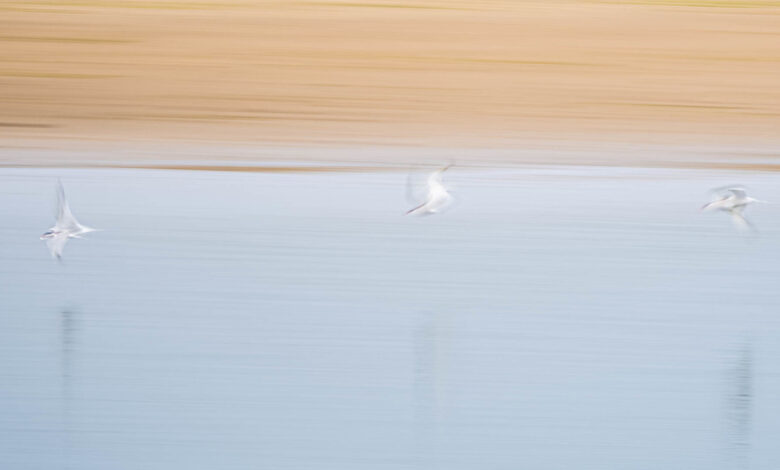Why you should stop working hard and start selling your photos to collectors

Photographers have three options when it comes to selling photos. They may be commissioned to shoot for clients, target the mass market, or choose to sell fewer, higher-quality collectibles at a narrower interest. There are good reasons why you should consider the last option.
This morning, I came across the website of a semi-professional landscape photographer whose work doesn’t appeal to me. I found their subjects bland and unappealing. Furthermore, I think they have poor photography and development skills. They make the image too bold, there are many unwanted distractions, and every other image has a poorly applied special effect.
There are two ways to see this. Should we think it’s okay? They are happy with what they are doing and people buy their prints and are probably happy with them. It doesn’t matter what I think of the photos. My tastes are different, and it would be a shame if we all liked the same thing. Alternatively, I could be angry at the second-rate salesman to unsuspecting customers who don’t know any better.
One thing that we forget as photographers is that we are living in a bubble. Therefore, we evaluate our work against other photographers whose images we see on websites and magazines. However, most ordinary people don’t spend their time in that bubble. Furthermore, they will have very little idea of the artistic value of one photographer’s work compared to another photographer’s work. They don’t have the same knowledge that you might have to judge a photographer’s skills. Therefore, if they see an oversaturated sunset photo, they will think, “How beautiful!” and buy it.
Appreciating beauty is a fundamental feeling; it is very easy to be drawn to it. It takes little brain and no education to understand that sunsets are beautiful.
That’s not limited to landscape photography. When it comes to photos of people, popularity is often due to a model’s attractiveness. Models, photographers, advertisers and fashion magazine editors all know this. The latest Swiss watch is likely to sell more if shown by a beauty with a body deemed perfect than when I’m in front of the camera. The depiction of naked women in photography provides an even more fundamental sense of sexual desire. That leads to another debate about the objectification of the female body, which this article does not address.
Wildlife photographers also realize this. The image of a bird on a stick is considered to be something less than a bird exhibiting unusual behavior, but it will be liked by a lot of people because the bird is quite beautiful.

What’s wrong with photographers selling low-quality, good-looking photos? Are our judgments of other people’s work purely subjective and therefore meaningless? After all, in my articles, I often encourage photographers to do their own thing and not be swayed by fashion.
Or are shoddy photographers selling second-rate products to confusing customers who don’t know better? After all, I was approached by someone else to fix my wedding photos. Also, a new workshop client told me they now know that the good picture they paid so much for a year ago isn’t so great. So I know how I’m going to answer those questions. The public, no one knows better, is being scammed.
We are faced with the problem that the market is flooded with photos and photographers far more than the number of potential customers. Furthermore, one can walk into Ikea or click into an online store and pick up prints of great photos for a song. We work hard, acquire our skills, invest thousands of pounds in equipment, buy insurance on our kits and work hard every hour of the day to provide good service and create produce excellent works of art. However, we can be put aside by the cheap, uncomplicated, elaborate work of people with no experience with cameras.

So, how do we compete in the face of unscrupulous customers who are satisfied with the work of low-quality suppliers? We make our photos collectible.
There are a few exceptions, but when we look at the photographers’ collected images, rather than beautiful, they present a challenge. The desire to own the photograph is motivated by an understanding or clever interpretation of it, not by its bright colors.
Perhaps the best way to illustrate that is to study collectibles. Take a look at any Magnum photographer, old or new. Then check out the photos published on fine art sites like Widewalls. Most of the images depicted have little to do with beauty.
So, what makes a collectible photo?
First, the subject and execution of the photograph must be unique. There’s no secret formula here, and copying someone else’s work or the latest trends won’t work. It needs factors that make a difference compared to the 1.7 trillion photos that will be taken this year. Then it asks for excellent execution. That doesn’t mean blindly following any composition rules or display guidelines. Instead, it should look just right. That’s hard to pin down, but it’s all to do with a personal style that will appeal to a collector.
On top of that, images often need to be part of a coherent collection of works. This means having a similar evolving style, color scheme, subject, lighting, composition, angle, etc. It doesn’t mean you’re stuck with taking such pictures forever, and it doesn’t require all of your work to be the same. However, collectors expect that you will create a collection that works together.

Unlike other works of art, identical photo prints can be reproduced over and over again. Just like philatelists want rare stamps in their collection, a philanthropist (yes, I just made up) wouldn’t be interested in something that is widely available. Therefore, collectibles should be restricted in their production. Collectors want rare prints. It is accepted for production of subsequent versions. Like books, each edition should be limited in number and each print individually numbered. The first versions will always be more valuable.
Collectors want to prove the provenance of their photos. The easiest way is to provide certificates that are hard to forge, numbered and signed.
Recreate the image with a medium that helps maintain that uniqueness. A high-quality print on gallery-grade media will be more desirable to collectors than a cheap print from your local supermarket.
Then it’s just a case of finding a way to sell your photos. That requires another whole paper.
Two other benefits come from selling collectibles. Each offers a potentially larger financial return for less effort. As a result, you spend time and energy creating fewer high-quality photos. Second, you can shoot what you want instead of letting an authorized curator dictate what you shoot or trying to please those who are happier with oversaturated landscapes.

Are you breaking into the collectibles market? Or are you frustrated by low competitive quality? If so, it would be great to hear about your experiences.




